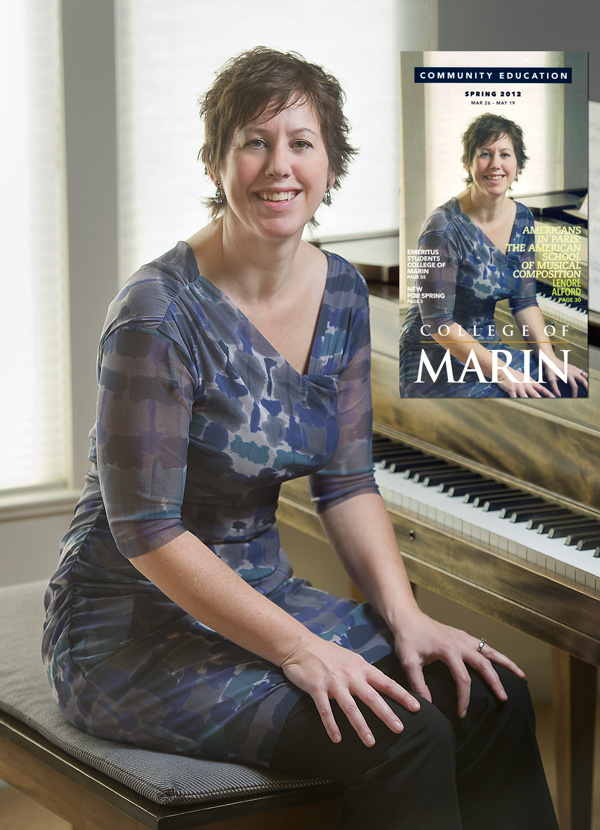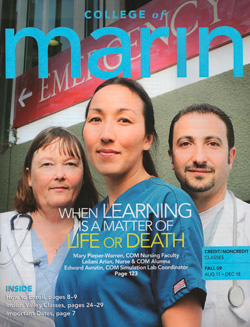
Even after putting 30 years in at the media factory, I still like getting the cover. It must be an ego thing, because it certainly isn’t the money.
This is Lenore Alford, an organist, conductor and generally all-around smart woman. I photographed her for the College of Marin, where is she teaching a class on Nadia Boulanger and the American School of musical composition in Paris — heady stuff, indeed. The college needed a a tall vertical for its community education catalog cover and Alford was the perfect subject.
The picture was made in the Mill Valley living room of one of Alford’s friends. The piano, a baby grand, was crammed into the corner and up against a set of large, bright windows that flooded the room with morning sunlight.
I didn’t want to shoot into the windows, fearing the backlight, so at first I tried shooting away from them and toward the wall behind the piano, lighting Alford with a ProFoto D4 head into a small box. The background, though was too messy to put type into and I couldn’t blur it because I couldn’t get her far enough away from the wall.
So, I embraced the windows, deciding to blow them out and use their avalanche of light for the background. I changed Alford’s position, took down the ProFoto, and set up a Nikon SB800 on a boom, attached a small softbox, turned the power way down (about 1/16th) and inched the light to within two feet of her head. The sunlight provided fill and tossed in some rim light as a bonus.
There is nothing technically complicated about this picture or, dare I say, artistically unique, but it is something that’s part of my daily life in my third or fourth or fight career (who’s counting, anyhow?) and might be interesting to those of you who wonder what photographers who aren’t Annie Leibowitz or Chase Jarvis do all day.
The hardest part of the shot was deciding on the lighting, not once but twice, and making those changes while Alford, the art director and the homeowners looked on — and making everyone feel not only like I knew what I was doing but that were being included in something fun.
The whole thing, from walking in the door with the gear to schlepping it back down the drive to my car took less than an hour, a normal shoot here in the shallow end of the photography pool.

 YouTube is awash with behind-the-scenes videos of famous photographers like
YouTube is awash with behind-the-scenes videos of famous photographers like